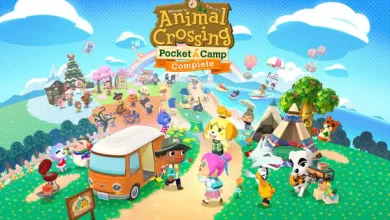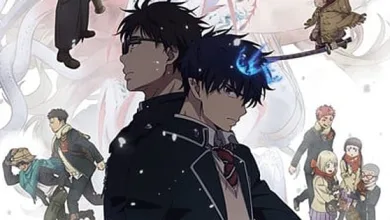Fist of the North Star Volume 11-12 Manga Review – Review

Fist of the North Star volumes 11 and 12 usher in a new era for the series which is more divisive than previous arcs but still of incredibly high quality.
As I said in the last review, we have been to the mountaintop of the series and are now beginning the descent. It’s hard to overstate how perfectly the confrontation between Raoh and Kenshiro was as a potential end to the series. Their conflict – and the entire drama between the four Hokuto brothers – was the central driving force of the series. It’s obvious that Buronson and Tetsuo Hara struck gold with this struggle for succession among the brothers, and it sustained the series for a long time all the while producing some of the greatest moments in action manga history. And honestly, it was paced nearly perfectly, feeling robust without overstaying its welcome. Raoh and Kenshiro have their final clash and the sun sets on that story. But the churn continues as the demand for new installments goes on.
No technique is more ruthless than the weekly publishing schedule, it would seem.
Thus, volume 11 gives us a time skip and moves the plot forward a few years. The drama amongst the Hokuto brothers may have reached its conclusion, but the world keeps on spinning. The wasteland is as cruel as ever. Small villages struggle against the harsh elements and the depredations of bandits just as they did at the very beginning. For all that happened, not much has changed.
Except, of course, our protagonists. Rin and Bat are much older now and more self-reliant. They have become freedom fighters in their own right. Older, battle-hardened, yet also weary from the struggle. Of course, they struggle with Kenshiro no longer present, but it’s not long before he returns to save the day. Kenshiro is as powerful as he ever was, though somehow sadder than before and this time riding none other than Raoh’s steed Kokuoh. In no time at all he is right back to helping them and facing down depraved bandits and cruel taskmasters.
These redesigns for the cast are pretty great all around as far as I’m concerned. Rin and Bat look substantially older while still retaining a lot of the key characteristics that make them identifiably themselves. It is somewhat odd how much taller they are given that Kenshiro does not look substantially older – it’s sort of like Kenshiro has only aged 1-5 years while Rin and Bat have gained 5-10 years in the same timeframe – but it’s not a dealbreaker or anything. I think it’s more a result of the series’ exaggerated proportions as a means to communicate character identity. Kenshiro looks like he hasn’t aged a day because he is still fundamentally the same person, while Rin and Bat have more than doubled in stature because they have grown so much as independent people. The exact details of height and time are irrelevant compared to the maturity they have gained through personal growth.
Kenshiro’s unchanging nature is something of a double-edged sword, however. On the one hand, I’m fine with it. Kenshiro is not and has not ever been a character who has had much on-screen growth. His story has largely been told, his life already experienced. He’s basically at his final form right out of the gate in chapter 1 of the manga. We primarily see his development via flashback from before the beginning of the story, and when we meet him he is already heading towards the great climactic battle of his life. Hence, even after this time skip his design, demeanor, and fighting style are largely unchanged and that makes sense.
The problem of course is that it just sort of feels like we’re going through the motions a bit. Raoh has been defeated, but the story has to continue for reasons outside the narrative and thus Kenshiro is the same guy, in the same setting, doing the same thing he did before. There’s nothing wrong with that per se, but you do get the sense that the series has lost a lot of direction and momentum. This comes with the territory of any time skip of course. But volume 11 suffers for it most of all.
By volume 12 we learn the inner workings of our new villain Falco’s Gento Kouken style which essentially atomizes anything it touches. This sets it apart from Hokuto Shin Ken (which detonates from within) and Nanto Seiken (which cuts and penetrates with ease) in theory, I think the differences with Nanto are not as strong as I would like. While there may be a textual difference between the styles backed by lore, is a Gento Kouken user swinging a disintegrating sweep attack all that different from a Nanto user like Rei swinging with cutting attacks? Perhaps in the justification, but it’s very similar in practice. This is especially true given the breadth of effects that fall under the umbrella of Nanto Seiken users. Hokuto Shin Ken still stands out as the more iconic style of the bunch and while Gento Kouken makes a good foil to the powers of the North Star style wielders, it doesn’t have all that different a feel from other South Star wielders we’ve seen in the past. “Kenshiro faces a dude who can cut him with strange techniques” is 80% of the fights in the story, and that doesn’t change much here.
The additional issue with Gento Kouken is that it is positioned as a third style. It’s tough to compete with Hokuto Shin Ken and Nanto Seiken as far as iconic fantasy martial arts go, and positing this as another style on equal or comparable footing is asking a lot. I think the idea of it being a style used primarily by bodyguards – perhaps meant as a nod to the real-life art of bajiquan, though that is speculation on my part – is an interesting concept that helps it stand apart. Hokuto and Nanto are very much delineated by physical effect and the rules of succession, but here we have a style that is more defined by role and proximity to power. However, it’s hard to buy it as a complete third style with the same weight as the prior two given how long we have spent with practitioners of the other arts in the story. Additionally, the concept of a bodyguard style makes sense in the narrative as he protects Rui and the Celestial legacy. But in actual combat, he doesn’t get a lot of chances to show protective techniques as we might expect and ends up fighting Kenshiro in the same manner as many of the other foes the series has seen.
Despite these issues, volume 12 hinges on Falco’s role as the antagonist and he is more than up to the challenge. We get multiple curveballs thrown at us as the fight progresses that add a lot of interesting texture to his background. We learn about his fight against Raoh where he protected his soldiers and the sacrifice of his leg, we learn about the existence of Rui, and we see the care his men have for him and that he too despises Jako. Not only does he become far more sympathetic, but his condition makes Kenshiro use pressure points to incapacitate his leg to make it a more even fight (by his estimation). So despite the comparative so-so aspect of Gento Kouken as an opposing style, Falco more than picks up the slack to create a memorable confrontation with Kenshiro. His quality as a foe raises my estimation of the Gento Kouken style overall and shows that Buronson and Tetsuo Hara still have a flair for creating iconic foes.
It must be said, however, that the moment-to-moment enjoyment of the series is still very high. Sure, the overarching thematic framework is starting to get a bit shaky, but the visceral core elements are as beautiful as ever. Incredible backgrounds, amazing martial arts, terrifying gore, over-the-top character designs, and iconic one-liners are all here. The gory ends some of these wasteland goons endure in volume 11 are some of the most gruesome in the series thus far (and I mean that in a complimentary way). Tetsuo Hara seems to be in peak form here on a technical level and as an expressive artist. My favorite shots are the splash page of the burning city with Rin and Bat on the motorcycle and the scene of Kokuoh leaping toward the rank-and-file soldiers. Something about Kokuoh becoming so vast he takes up an entire splash page all by himself, each hoof the side of a sedan and decapitating three to four soldiers at a time – this is a terror on four legs, a nightmare made real. It’s all so gorgeous and impossible not to enjoy as a work of art.
I love what the Hahn brothers add to the story. The Hahn brothers are mostly jobbers, but I think they stand out for two reasons. Firstly, having a dude sacrifice himself by headbutting an unexploded warhead to obliterate an enemy army is objectively amazing. Secondly, they are very clearly based on the Wrestlers Hawk and Animal of the Road Warriors fame. They were my favorite tag team wrestlers as a kid so I get a kick out of them being a part of one of my favorite works of all time. But I also like that it makes explicit the influences and tempo of Fist of the North Star as a whole, bringing full circle some of the key inspirations that make up the DNA of this work. The Road Warriors lifted their look from the Mad Max films as well, and Fist of the North Star has the same general story progression of professional wrestling. Two musclebound oddballs enter the ring for melodramatic reasons, violence ensues, and the cycle continues.
Ein’s story ends in these volumes as well. Ein is to Kenshiro’s prior companions much like Falco is to Kenshiro’s prior enemies: nowhere near as iconic, but no slouch either. I think what I enjoy most about Ein’s sacrifice is that it doesn’t take place within the context of a life-and-death battle against an enemy combatant. Rather, he dies protecting and helping others escape environmental hazards. The desperation of his repeated hammer blows to open up the ground, only to have it finally crack beneath a shed tear – that’s cinema, folks. That’s what we’re here for.
Though there are undoubtedly somber moments, the comedy is still ever-present. The series has always been outright comical with the screams of “Hidebu!” before a villain goes splotch and so on. But something about the comically violent deaths the villains face in this volume just feels like Buronson and Tetsuo Hara are at the top of their game. They have perfected the ironic-horror-movie-death-but-delivered-by-martial-arts-protagonist technique and we all benefit from it.
Volume 11 also has two other unique benefits that help keep it in contention for one of my favorite releases thus far. Included in the beginning is a 2014 story surrounding Kenshiro, Kokuoh, and Juza’s son during the time skip. Tetsuo Hara and Buronson teamed up again to tell this story in celebration of the 30th anniversary of the series, and I enjoy the work itself and that it was included in this volume. I think it fits in quite naturally with the series as it would have occurred chronologically. Plus it would be too small to be a separate release, so I’m glad they included it here. Additionally, we get an interview with Buronson at the end of the volume which is something they have not done since the original volume 1 release. It contains some wonderful insights with the legend himself and while I still am somewhat saddened that not every volume had little snippets like these included, I am overjoyed that we got more insights of any sort. Any opportunity to read the words of Buronson and Tetsuo Hara is one to be grateful for.
Volumes 11 and 12 are strong entries in one of the greatest manga of all time. It has all the violence, melodrama, and gorgeous visuals that are the series’ hallmarks. Their only sin is that they are “merely” really good, a slight step down from the absurd quality of prior volumes. If you have stuck with the series this far you will be rewarded with some darn fine comics though it may not reach the stellar heights of prior volumes.
Source link
#Fist #North #Star #Volume #Manga #Review #Review



